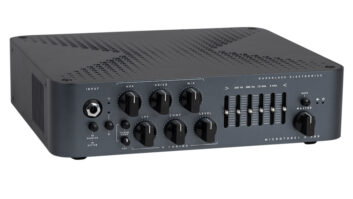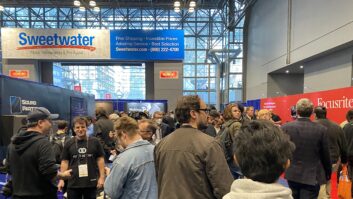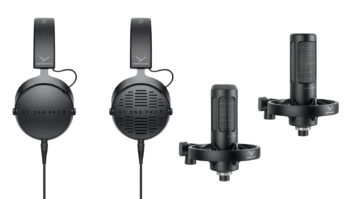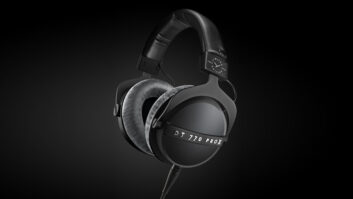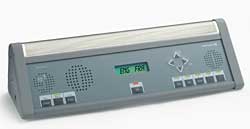
beyerdynamic will show the Revoluto Microphone Station at AES 2006 (Booth #1102). Made for use with the MCS-D 200 conferencing system, the Revoluto provides high-quality sound reproduction without the use of a gooseneck microphone.
Using line array technology, the microphone capsules in the Revoluto create an omnidirectional pattern, allowing the speaker to move around without affecting the volume or sound quality. Due to its multi-capsule design, the Revoluto provides additional redundancy with no loss of pickup. In addition, the Revoluto’s low-profile design provides a clear view of the speaker.
The Revoluto station is available in three versions: Basis, Standard and Graphic. The Basis station comes equipped with one microphone button, function buttons for clear and priority, and a two-way Extended Base loudspeaker system. In addition to featuring a single microphone button and function buttons, the Standard station has an alphanumeric display with menu, language selection and volume control, as well as five buttons for voting. The Graphic station is offered with the same features as the Standard, but with a graphic display for non-Latin characters and 10 multifunction buttons for participants to phone each other, as well as vote. All stations are equipped with two LEDs, which alert the speaker when he or she is out of range of the microphone.
The Revoluto comes with the NetRateBus network, which operates similarly to the Internet, providing transmission of fully digital audio and data management via the conferencing system’s cable run. The NetRateBus network provides 54 multifunctional audio channels, which can be allocated freely for discussions, interpreting applications, phoning from microphone station to microphone station, and conference calls.

The company will also show its Opus 900 wireless system, which offers a variety of transmitters, making it ideal for a wide range of applications. Transmitters for the system include the DM 960 S, DM 960 B and the DM 969 S dynamic transmitters; the EM 981 S and the CM 930 B condenser transmitters; and the TS 900 M and TS 900 C pocket transmitters with rechargeable contacts. Both the TS 900 M and TS 900 C are outfitted with ACT infrared interface for frequency setting, LCD for selected channel, group and battery status (5-stage), gain control, silent on/off switch and 4-pin mini-XLR input connector.
Three receivers, offering 99 pre-programmed frequencies, are available: the NE 900 S single-channel, NE 900 D dual-channel and the NE 900 Q quad-channel receivers. Both the NE 900 D and NE 900 Q are housed in a 1U/19-inch rackmount and feature an integrated antenna splitter, while the NE 900 S is housed in a 1U/9.5-inch rackmount. Each model has an engineer-friendly “jog wheel” for fast access and reconfiguration of the system. In addition, all offer a monitoring headphone output with volume control and balanced XLR per channel, remote-in and -out port, and PC controllability.
For more information, visit Revoluto and Opus 900. For additional SR products, visit mixonline.com/livesound/products/.
